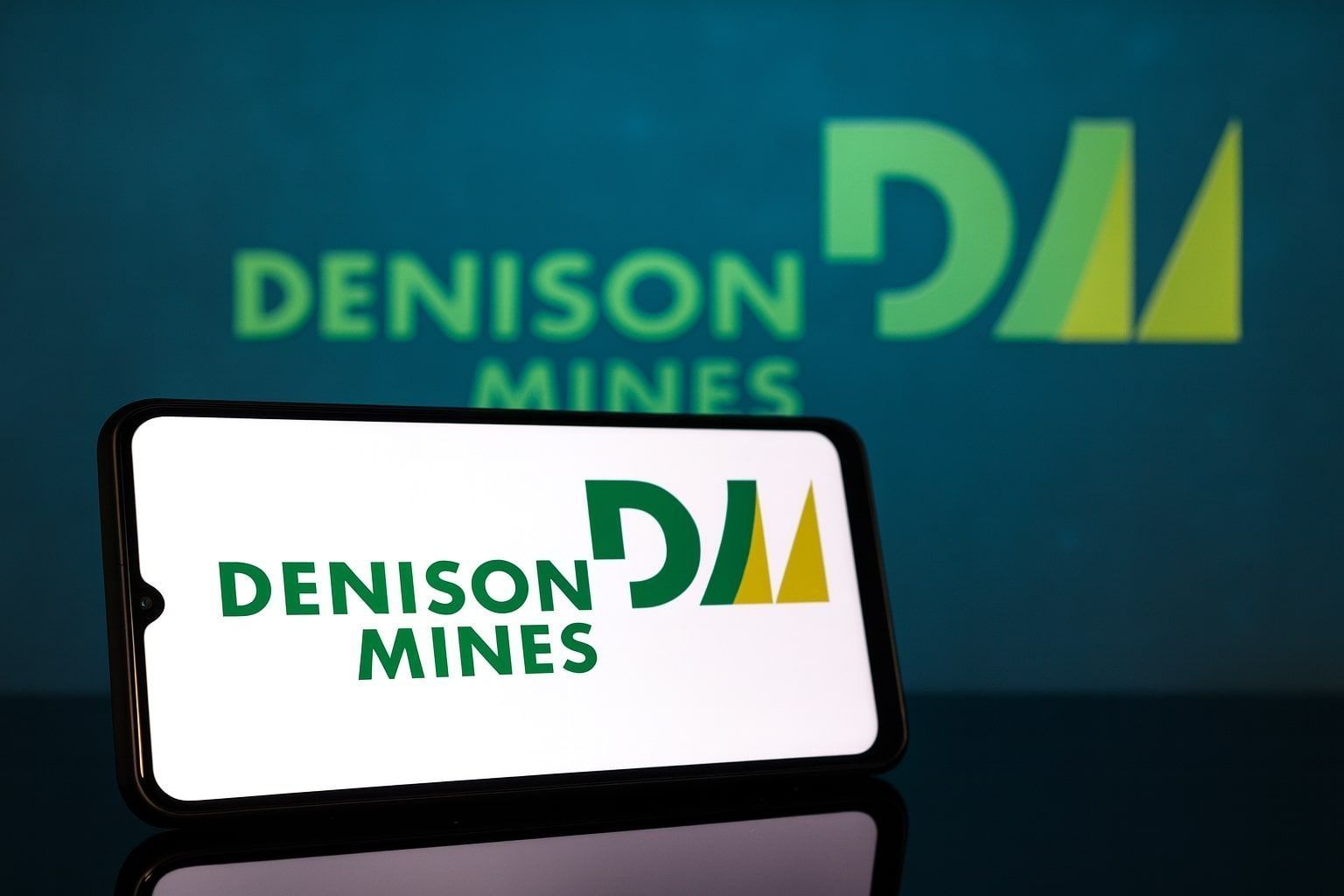As of the close on Friday, November 21, 2025, Denison Mines Corp. (NYSE American: DNN) finished the session at $2.27 per share, down about 2% on the day. The stock traded between $2.20 and $2.32 on volume of roughly 66.8 million shares, below its three‑month average volume of around 86 million shares. [1]
That puts DNN in the middle of its 52‑week trading range of $1.08 to $3.42, with a market capitalization of about $2.0 billion and a 1‑year performance that’s modestly negative at roughly ‑4% despite a strong run earlier in 2025. [2] Over the last six months, however, Denison shares are still up more than 70%, underscoring how volatile uranium names have been this year. [3]
For investors watching uranium stocks today, DNN sits at the crossroads of three big storylines: a strengthening project pipeline, a complex regulatory backdrop, and a restless market trying to price in long‑term nuclear demand.
DNN stock today: price, volatility and where it sits in the cycle
At Friday’s close, Denison Mines stock: [4]
- Last close: ~$2.27
- Intraday range: $2.20 – $2.32
- 52‑week range: $1.08 – $3.42
- Market cap: ~US$2.0–2.1 billion
- 1‑year change: about ‑3.8%
- Beta: ~2.0, indicating significantly higher volatility than the broad market
A beta above 2 and a 6‑month gain of nearly 73% followed by recent pullbacks highlight that DNN trades more like a high‑beta growth/commodity name than a steady income stock. There is no dividend, and the company is loss‑making on a trailing basis, with negative EPS and a price‑to‑book multiple above 7x as investors pay up for future production rather than current earnings. [5]
From a technical perspective, Denison’s 14‑day RSI near 31 puts it just above traditional “oversold” territory, suggesting selling pressure has been elevated but not extreme. [6] For traders, that can mark a level to watch for potential bounces—though uranium sector sentiment and news often matter more than charts in the short term.
The fundamental story: from developer to emerging uranium producer
Denison Mines is best known for its Wheeler River Uranium Project in Saskatchewan’s Athabasca Basin, where it holds an effective 95% interest in what is considered the largest undeveloped uranium project in the eastern part of the basin. [7] Wheeler River hosts two high‑grade deposits, Phoenix and Gryphon, with Phoenix planned as an in‑situ recovery (ISR) operation and Gryphon as a conventional underground mine. [8]
According to Denison’s 2023 technical studies, the Phoenix ISR project carries an after‑tax NPV (8%) of about US$1.56 billion and an after‑tax IRR around 90%, placing it among the lowest‑cost potential uranium projects globally if executed as planned. [9] This “low‑cost, high‑grade” narrative is a key reason many investors watch DNN as a leveraged play on long‑term nuclear demand.
Q3 2025: first new ore and growing cash war chest
In its Q3 2025 earnings release, Denison reported several milestones that matter directly for the DNN investment case: [10]
- First production from McClean North:
- Via the McClean Lake Joint Venture, the company began using the patented SABRE mining method at the McClean North deposit.
- In Q3 alone, approximately 2,063 tonnes of high‑grade ore were mined (100% basis), translating into more than 85,000 pounds of U₃O₈ produced at the McClean Lake mill, with Denison’s share around 19,000 pounds.
- Initial operating cash costs came in at roughly US$19 per pound U₃O₈, a very competitive cost level.
- Convertible notes to fund Phoenix and growth projects:
- In August 2025, Denison completed a US$345 million convertible senior notes offering due 2031, with a 4.25% coupon and an initial conversion price of about US$2.92 per share, roughly a 35% premium to the share price at pricing.
- A capped‑call structure effectively lifts the economic conversion price to around US$4.32 per share, giving management additional flexibility if the stock rerates higher over time.
- Balance sheet strength:
- At the end of Q3, Denison reported combined cash, investments and uranium holdings of nearly C$720 million, giving it a substantial liquidity cushion as it moves toward construction decisions at Phoenix.
- Phoenix engineering nearly complete:
- Detailed engineering for Phoenix is reported to be about 85% complete, with most scopes required in the first year of construction at or near 100% completion.
- A final investment decision (FID) is currently targeted for the first half of 2026, pending regulatory approvals.
Management has framed these developments as evidence of Denison’s “re‑emergence as a globally significant uranium producer” against a backdrop of strengthening uranium market fundamentals and growing nuclear energy demand. [11]
New Skyharbour deal: expanding the land package around Wheeler River
One of the most notable pieces of corporate news for DNN in November 2025 is Denison’s new agreement with Skyharbour Resources. On November 17, 2025, the company announced deals that give it initial stakes in Skyharbour’s Russell Lake Uranium Project, directly adjacent to Wheeler River. [12]
Key elements of the transaction include: [13]
- The Russell property is being divided into four joint ventures:
- Russell Lake (RL): Denison 20%, Skyharbour 80%
- Getty East: Denison 30%, Skyharbour 70%
- Wheeler North: Denison 49%, Skyharbour 51%
- Wheeler River Inliers: Denison 70%, Skyharbour 30%
- Denison obtains earn‑in options that could lift its interests in Wheeler North and Getty East up to 70% over time, subject to staged exploration spending and cash payments.
- In total, Denison will pay C$18 million in consideration: an upfront C$2 million cash payment plus C$16 million in deferred payments, which can be settled in cash or Denison shares. Closing is expected on or before December 21, 2025, pending customary approvals.
- The deal also grants Denison priority access to Skyharbour’s existing exploration camp at Russell, supporting cost‑efficient field work.
For shareholders, the strategic takeaway is that Denison is consolidating a dominant land position in one of the most prospective uranium corridors in the Athabasca Basin, right around its flagship Wheeler River assets. If exploration success follows, the Skyharbour partnership could extend Denison’s growth runway well beyond Phoenix and Gryphon.
Regulatory overhang: judicial review of the Wheeler River approval
While the Skyharbour deal and Q3 update are positives, the regulatory risk profile around Wheeler River has become more complicated.
On November 4, 2025, Denison disclosed that the Peter Ballantyne Cree Nation (PBCN) filed an application for judicial review in the Court of King’s Bench for Saskatchewan. The application seeks to: [14]
- Set aside the Saskatchewan government’s ministerial approval of the provincial Environmental Assessment (EA) for the Wheeler River project.
- Send the decision back to the provincial environment minister for reconsideration.
- Argue that the government allegedly breached its duty to consult and must conduct further consultation with PBCN regarding the proposed mine and processing plant.
Denison, for its part, has stated that: [15]
- It believes the provincial consultation process was thorough and meaningful.
- It has engaged directly with PBCN since 2023 and recently signed an environmental monitoring and capacity agreement to support independent monitoring by the Nation.
- It denies the claims in the application and intends to vigorously defend against the orders sought.
This court challenge lands just as Denison is nearing the end of a multi‑year permitting journey. The company already holds provincial EA approval for Wheeler River, and federal Canadian Nuclear Safety Commission (CNSC) hearings—split into an October and December 2025 session—are underway to consider federal EA approval and a license to prepare the site and construct the Phoenix ISR project. A CNSC decision is currently expected in early 2026. [16]
For DNN shareholders, this judicial review doesn’t automatically derail Wheeler River, but it adds uncertainty and potential delay, and investors will be watching court and regulatory developments closely into 2026.
Analyst sentiment and valuation snapshot
Despite recent volatility and the regulatory overhang, some analysts remain constructive on Denison’s longer‑term prospects.
On November 11, 2025, Roth MKM reiterated a “Buy” rating on Denison Mines with a US$3.00 price target, implying upside from current levels. [17] While not every platform publishes a full DNN coverage list, recent data show: [18]
- Trailing revenue in the low single‑digit millions of dollars, with net losses of more than US$100 million over the last twelve months.
- No dividend, reflecting a growth‑and‑development focus.
- A price‑to‑book ratio around 7x and negative earnings, meaning traditional P/E‑based valuation is less useful than asset value and NPV‑based analyses of the project pipeline.
- A 1‑year share price change of roughly ‑4%, but strong multi‑month momentum prior to the recent pullback.
Some data providers also note that earnings estimates for upcoming periods have been revised downward by a small number of analysts, underlining that near‑term profitability remains challenging even as Denison invests heavily in future production capacity. [19]
Macro backdrop: uranium demand and the nuclear narrative
Denison’s strategy is tied to a broader thesis: global nuclear power capacity is expected to grow, supporting strong uranium demand over the coming decades.
In its Q3 commentary and project materials, the company has pointed to: [20]
- Persistent improvements in uranium market fundamentals, including tighter supply/demand balances.
- The role of nuclear energy as a low‑carbon baseload source in many national decarbonization plans.
- The potential for Phoenix to become Canada’s first commercial ISR uranium mine, which could offer lower operating costs and smaller surface footprints compared with conventional mining.
If uranium prices remain robust or move higher, high‑quality assets like Phoenix and Gryphon may become increasingly attractive to utilities looking for long‑term offtake and to investors seeking exposure to the energy transition.
Key catalysts to watch for DNN stock in the weeks and months ahead
For readers following DNN stock today, several near‑ and medium‑term events could move the share price:
- Second CNSC hearing session and federal decision
- The final part of the CNSC public hearing for the Phoenix ISR project is scheduled for the week of December 8, 2025, with a decision on federal EA approval and the construction license expected in early 2026. [21]
- A positive ruling could de‑risk the project significantly; adverse outcomes, or even prolonged delays, would likely weigh on DNN.
- Progress of the PBCN judicial review
- Any court rulings, procedural milestones, or negotiated outcomes arising from the judicial review of the provincial EA approval could affect perceptions of Wheeler River’s timeline and permitting certainty. [22]
- Closing of the Skyharbour Russell Lake transaction
- The deal is expected to close by December 21, 2025, subject to approvals. Investors will watch for confirmation of closing, early exploration plans, and how aggressively Denison chooses to exercise its earn‑in options. [23]
- Uranium price moves and sector sentiment
- As a high‑beta uranium name, DNN often amplifies moves in the spot and term uranium markets. Sharp rallies or pullbacks across the uranium complex can quickly spill into Denison’s share price, sometimes overshadowing company‑specific news.
- Next earnings and project updates
- Denison’s next scheduled earnings date is currently indicated as February 26, 2026, when investors may get updated guidance on capital spending, procurement, Phoenix engineering and the company’s cash and uranium inventory. [24]
What today’s DNN share price may be telling investors
With DNN trading around $2.27, below the recent 52‑week high of $3.42 but well above the yearly low, the market appears to be balancing strong project and balance‑sheet fundamentals against real execution and regulatory risks. [25]
On the positive side:
- Wheeler River’s Phoenix deposit is advanced, large and potentially low‑cost, supported by feasibility work and nearing the end of a long permitting process. [26]
- Denison now has meaningful production exposure via McClean North and the McClean Lake mill, with initial costs that look competitive. [27]
- A bolstered balance sheet, including hundreds of millions in cash, investments and uranium holdings, gives Denison flexibility as it moves toward construction. [28]
- The Skyharbour deal significantly expands Denison’s exploration footprint around Wheeler River, potentially adding long‑term upside. [29]
On the risk side:
- The judicial review introduces a new legal and timing risk around Wheeler River’s provincial approval. [30]
- DNN remains a non‑dividend‑paying, loss‑making company with valuation anchored in future cash flows that depend on successful project execution and uranium prices staying supportive. [31]
- High share price volatility (beta ≈ 2) and a leveraged exposure to uranium mean DNN can move sharply in both directions on macro or sector headlines. [32]
For short‑term traders, today’s levels may be viewed through the lens of volatility, momentum, and upcoming catalysts such as CNSC hearings and court developments.
For long‑term investors, the central question remains whether Denison can successfully bring Phoenix (and eventually Gryphon and other assets) into production on time and on budget while maintaining constructive relationships with Indigenous communities and regulators—against a backdrop of what many see as a multi‑decade nuclear upcycle.
Bottom line
On November 22, 2025, Denison Mines sits at a pivotal moment. DNN stock today reflects both optimism about a world‑class uranium project nearing construction and caution around regulatory, legal and execution risks.
Whether DNN belongs in a portfolio will depend on each investor’s view of:
- The nuclear and uranium cycle,
- Their tolerance for volatility and legal/regulatory risk, and
- How comfortable they are owning a development‑heavy story rather than a mature cash‑generating miner.
As always, this article is for informational purposes only and does not constitute investment advice. Investors should conduct their own due diligence or consult a qualified financial professional before making any decisions regarding Denison Mines or any other security.
References
1. www.investing.com, 2. www.investing.com, 3. www.investing.com, 4. www.investing.com, 5. www.investing.com, 6. www.investing.com, 7. denisonmines.com, 8. denisonmines.com, 9. denisonmines.com, 10. www.prnewswire.com, 11. www.prnewswire.com, 12. www.prnewswire.com, 13. www.prnewswire.com, 14. www.prnewswire.com, 15. www.prnewswire.com, 16. www.prnewswire.com, 17. finance.yahoo.com, 18. www.investing.com, 19. www.investing.com, 20. www.prnewswire.com, 21. www.prnewswire.com, 22. www.prnewswire.com, 23. www.prnewswire.com, 24. www.investing.com, 25. www.investing.com, 26. denisonmines.com, 27. www.prnewswire.com, 28. www.prnewswire.com, 29. www.prnewswire.com, 30. www.prnewswire.com, 31. www.investing.com, 32. www.investing.com







